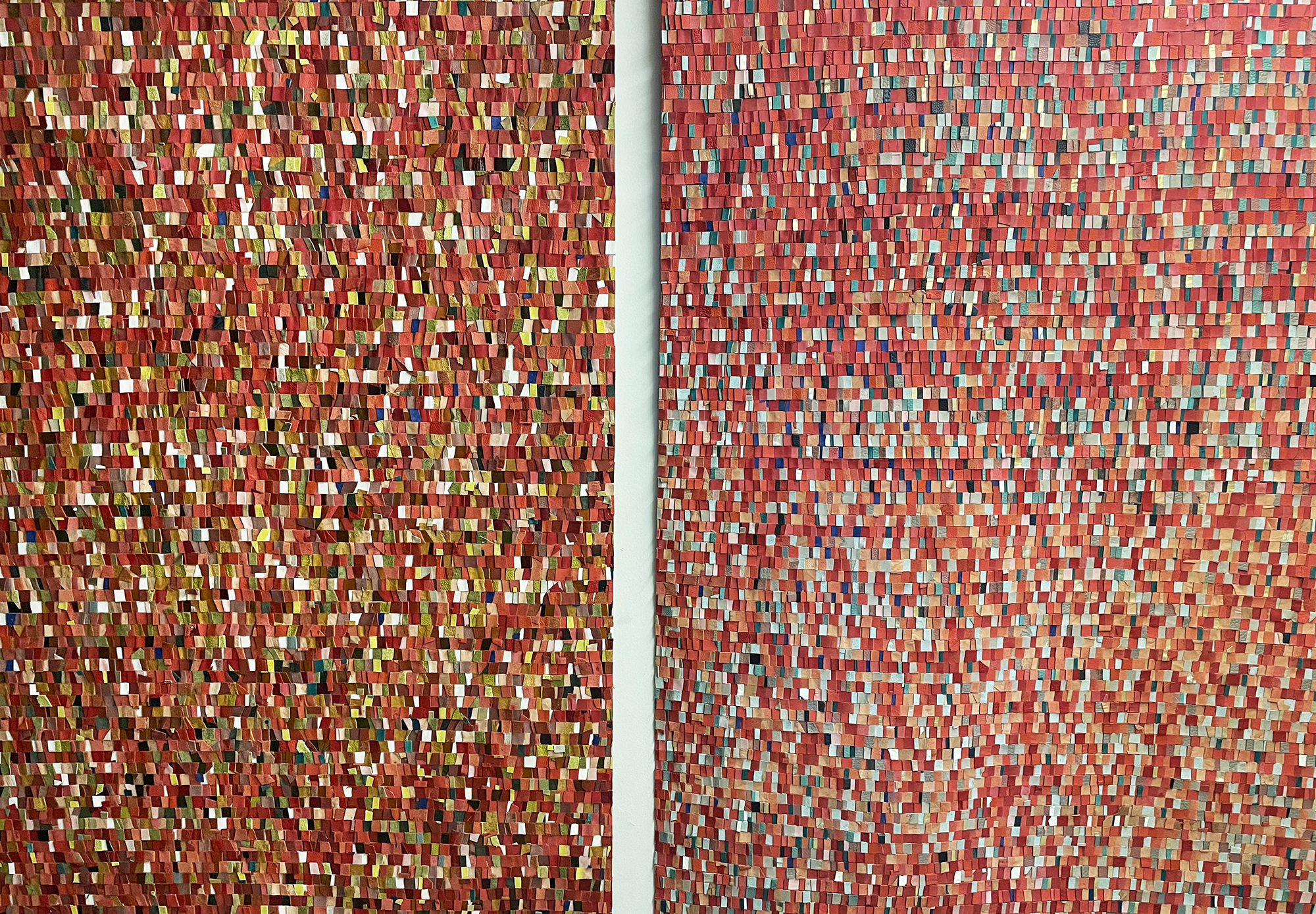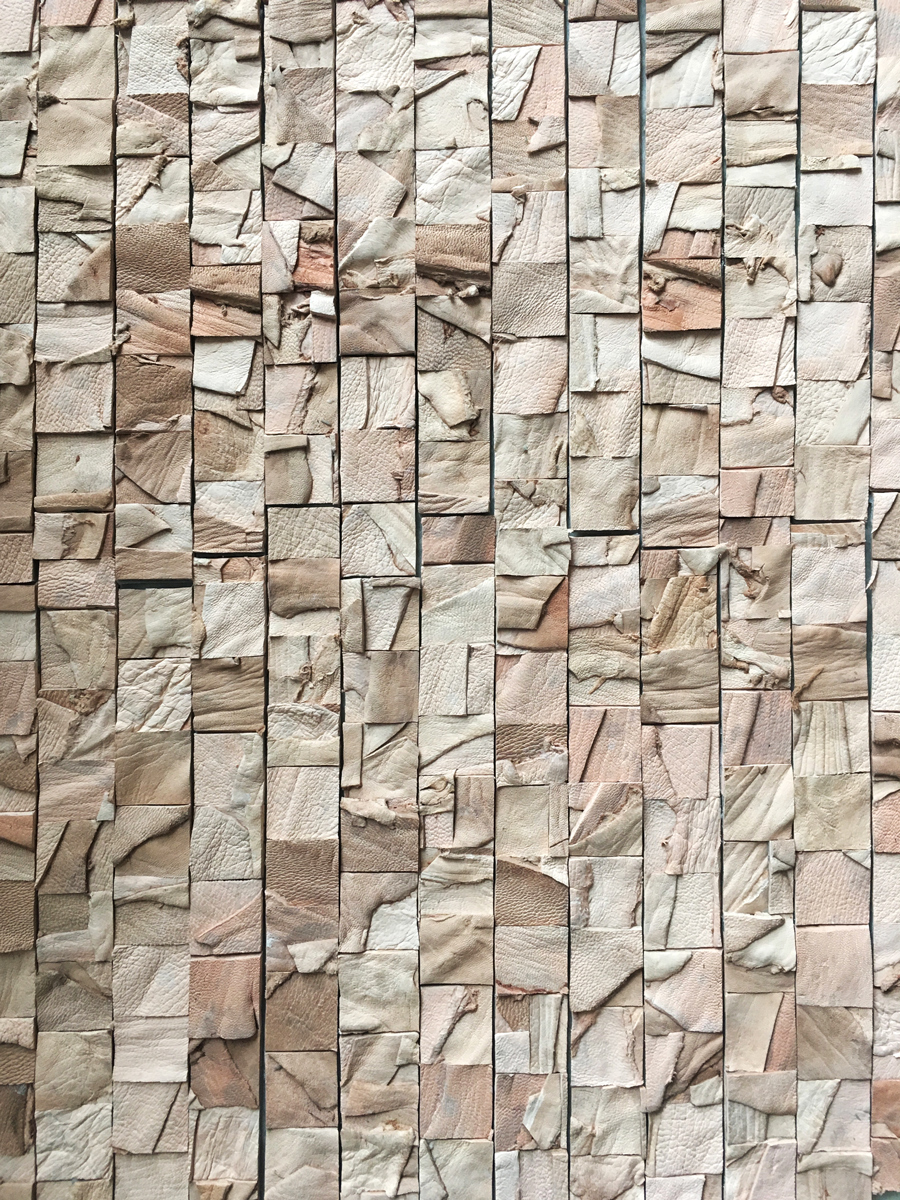Medina
Medina is a technique of creating tapestries from discarded leather leftovers. By embracing the irregular shapes of these scraps, typically considered waste, each Medina tapestry develops a unique, non-repetitive pattern. The inherent imperfections of the leather are celebrated, creating an apparently uniform yet ultimately singular effect, free from repetition. Each individual tapestry created using this method is also known as a Medina.
The Medina process transforms discarded leather scraps and industrial leftovers into unique, pixelated tapestries through a meticulous sequence of cutting and gluing. It begins with the careful selection and organization of leather scraps, salvaged from various sources; large or unsuitable pieces are trimmed to manageable sizes. These prepared leather pieces are then glued onto a textile backing, creating a base layer that establishes the overall texture and color palette of the tapestry. Once the initial layer is adhered, the entire sheet is precisely cut into strips, a critical step in achieving the signature pixelated effect. These strips are then reorganized and glued onto a new backing surface, allowing for the creation of a deliberate, pixel-like pattern where the individual leather pieces act as the 'pixels' of the image. The completed tapestry is then refined, with edges trimmed and any necessary adjustments made to ensure a clean and cohesive final product; the focus remains on showcasing the unique textures and colors of the repurposed leather, arranged into a distinct pixelated composition.
The Medina process transforms discarded leather scraps and industrial leftovers into unique, pixelated tapestries through a meticulous sequence of cutting and gluing. It begins with the careful selection and organization of leather scraps, salvaged from various sources; large or unsuitable pieces are trimmed to manageable sizes. These prepared leather pieces are then glued onto a textile backing, creating a base layer that establishes the overall texture and color palette of the tapestry. Once the initial layer is adhered, the entire sheet is precisely cut into strips, a critical step in achieving the signature pixelated effect. These strips are then reorganized and glued onto a new backing surface, allowing for the creation of a deliberate, pixel-like pattern where the individual leather pieces act as the 'pixels' of the image. The completed tapestry is then refined, with edges trimmed and any necessary adjustments made to ensure a clean and cohesive final product; the focus remains on showcasing the unique textures and colors of the repurposed leather, arranged into a distinct pixelated composition.














